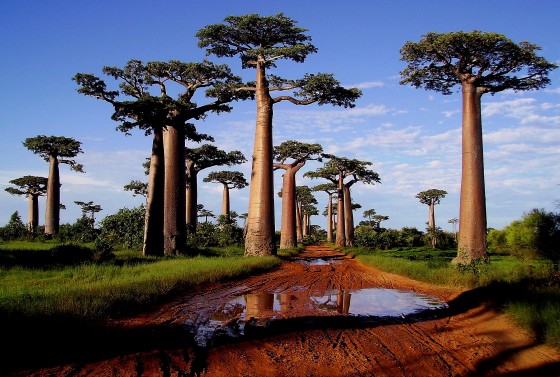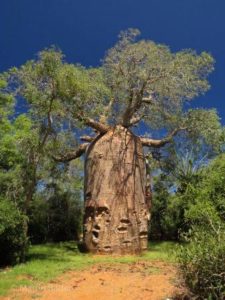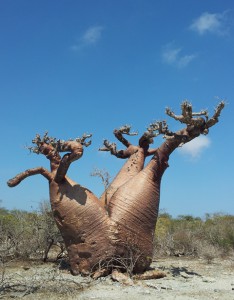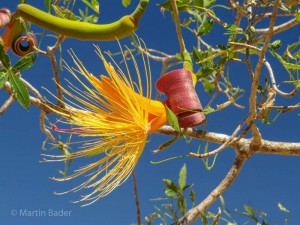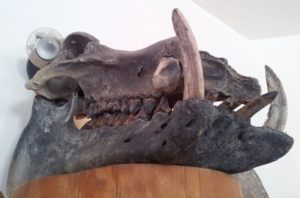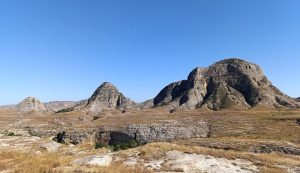Impressive Baobabs at Risk
Baobabs are fascinating at first sight, especially because of their unique growth form and enormous size. Descriptions from the first European explorers mention that the tree looks like it’s upside down. Many local legends and myths surrounding the Baobab also emphasize its significance in the culture.
Unusual growth form highlighted. The large, round fruits of this tree, whose shape is reminiscent of rolls, have given it its colloquial name “Baobab tree”. Baobabs grow in many different areas of Madagascar and can even be found in the northern coastal regions. Systematically, the Baobab or Baobab tree belongs to the Malvaceae family. There are eight different subspecies, seven of which are native to Madagascar. Six of these seven species are endemic, meaning they are only native to Madagascar. The impressive
Special Features and Uses of Baobabs
Baobab trees impress with their height of up to 30 meters. They can also reach a diameter of up to seven meters. Experts also believe that under ideal growing conditions, a Baobab tree can live up to two thousand years. However, the oldest specimens have so far been estimated to be “only” around a thousand years old.
Protecting Baobab Trees
The government of Madagascar has been advocating for the protection of the diverse flora and fauna on the island. Nature conservation projects and related measures, however, come at a high cost. Deforestation for agriculture and timber harvesting has led to a change in the ecosystem of Madagascar. Ecosystems resulting in a strong impact on the habitat of baobab trees. Ecologically responsible tourism in Madagascar is crucial to preserve the baobab trees. Entrance fees for national parks are invested in various conservation projects, ensuring that the breathtaking sight of these majestic baobab trees will hopefully remain for years to come. If you wish to witness these prehistoric tree giants in person, feel free to contact us at any time and take advantage of our various nature travel offerings.

